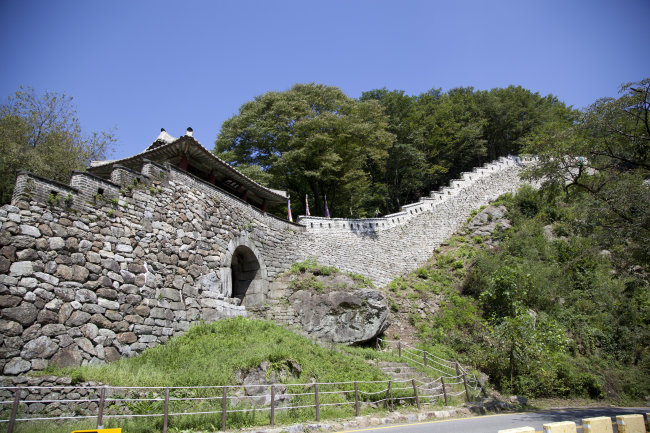 |
|
Namhansanseong is a mountain fortress on the southern outskirts of Seoul. (Yonhap News) |
Namhansanseong, a mountain fortress on the southern outskirts of Seoul, has become a UNESCO World Heritage site, joining the ranks of such natural and cultural wonders as Angkor Wat, Machu Picchu and the Galapagos Islands.
Representatives of the UNESCO World Heritage Committee, currently meeting in Qatar, voted Sunday to inscribe the Korean fortress on the much-coveted list for its “outstanding universal value,” along with a handful of other new sites.
With the addition of Namhansanseong, Korea now has a total of 11 World Heritage sites, including Changdeokgung Palace in Seoul, the ancient city of Gyeongju and the volcanic island of Jejudo. The most recent sites to win recognition in Korea were the Hahoe and Yangdong villages in North Gyeongsang Province, which were both added to the list in August 2010.
Serving as a key military stronghold since the seventh century, during the ancient kingdoms of Baekje and Silla, until the country’s last ruling kingdom of Joseon (1392-1910), the fortress stands on the steep ridge of Mount Namhansan, which straddles between three cities in Gyeonggi Province ― Gwangju, Seongnam and Hanam.
What makes it stand out from other fortresses in Korea and the rest of the world is that it was built to serve ― and did serve ― as the king’s refuge and temporary capital during war. Inside the 11.76-kilometer stone walls are a royal palace complex, a village and a number of temples.
In 1636, as Manchu invaders swept in from the North, King Injo of Joseon took shelter there for 47 days before he finally surrendered due to lack of food, water and supplies.
“Namhansanseong and its surroundings have witnessed and experienced a long period of development as military facilities and therefore facilitate a better understanding of different styles and techniques of fortress construction,” Cultural Heritage Administration of Korea said through a press statement released shortly after the UNESCO decision.
In 2011, Korea decided to apply for UNESCO World Heritage status for the fortress, which is also designated as National Historic Site No. 57. Korea formally submitted an application in January last year. A team of experts under the U.N. cultural body came to Korea last September for an on-site inspection.
Among the new additions made in Qatar are Japan’s Tomioka Silk Mill, the Van Nelle Factory in the Netherlands, and the Andean Road System, which runs through Argentina, Bolivia, Chile, Colombia, Ecuador and Peru.
By Lee Sun-young (milaya@heraldcorp.com)

